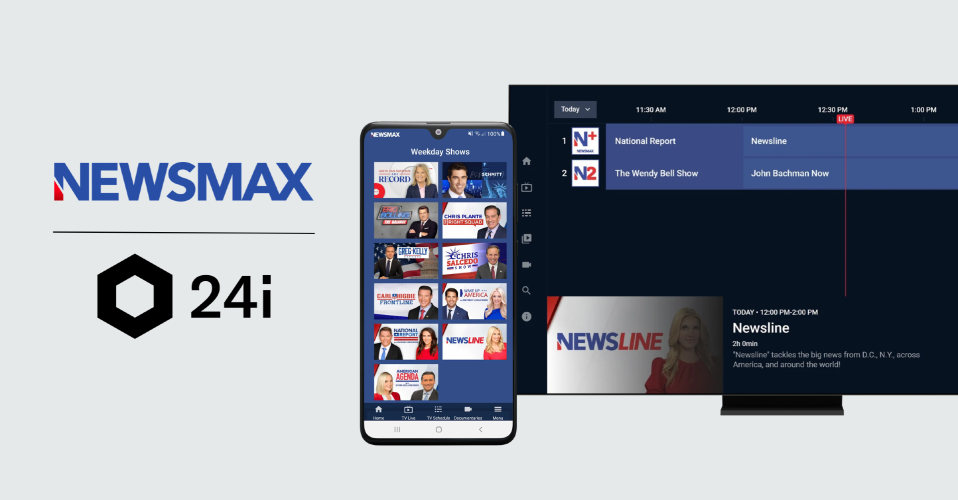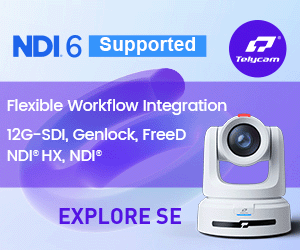1.) What are the key elements involved in OTT monitoring? Why is it critical today?
As OTT (Over-The-Top) technology has gotten more mature and established robust standards over the years, the concept of OTT monitoring is gaining popularity. With customer expectations soaring, it’s vital for OTT providers to deliver superior quality content. To deliver Quality of Experience (QoE) on par with linear TV broadcast, the entire system, starting from ingest to multi-bitrate encoding to delivery to CDN must be monitored continuously.
Streaming service providers and broadcasters understand the complexities involved in OTT delivery and the media distribution chain - from content acquisition to actual transmission. OTT monitoring primarily involves monitoring the status of all key elements in the pipeline starting with the media source, encoders, decoders, output of Content Distribution Network (CDN), etc. The amount of media consumed over OTT is growing at a staggering pace, and people’s viewing habits are rapidly moving towards a unified multi-screen experience. These rapid changes demand a strong comprehensive monitoring solution that takes care of all the aspects in OTT chain and makes it easy for people at various levels in broadcast operations to monitor and control the entire system.
The primary goals of monitoring OTT are to guarantee Quality of Service (QoS), Quality of Experience (QoE) and compliance monitoring. These quality metrics include media quality for confidence monitoring and delivery of captions, both for primary and secondary languages, to increase user engagement. In addition to QoS and QoE monitoring, broadcasters have another challenge to track viewership using ID3 Tag technology.
2). How has monitoring OTT content advanced in the past year?
OTT monitoring is evolving at a rapid pace. Early on, OTT monitoring had largely been limited to IT infrastructure monitoring, and to some extent, monitoring streams at edge locations as a proof of delivery.
With the market growing, more and more OTT broadcasters are starting to see the value of monitoring. Efforts are on to converge OTT platforms and optimize streaming protocols.
OTT providers use various streaming protocols for media delivery, including Real Time Streaming Protocol (RTSP), Real-time Transport Protocol, Smoothing Streaming, etc. Often, the receiving devices support only one or two protocols requiring service providers to stream their content in multiple protocols. Nowadays, the media streaming process is largely being performed in the cloud, making use of CDN (Content Delivery Network).
Also, transmission errors can occur while transporting media data using IP network; errors could pertain to packet latency, jitter, packet loss, etc. This makes it important for service providers to introduce complete quality monitoring solutions, including video monitoring at the CDN data centers and at edge locations.
3.) What is the state of Logging and Compliance today?
Logging and compliance of traditional broadcasts are being done by a lot of companies. However, these types of loggings neither cover OTT content nor do they cover content that has advertisements inserted at the MSO.
OTT operations have changed the way advertisements are delivered. They can specify ads for a specific market or a community. However, these broadcasts generally are poorly monitored, or at times not monitored at all compared to traditional broadcasts.
Thus far, there has been no major push from the industry to monitor OTT due to minimal FCC compliance requirements and a lack of industry standard on OTT.
4.) What is being done now on a more consistent basis?
Rapid innovations are being made in OTT and broadcast video delivery. Content owners are under constant pressure to respond to the surge in OTT content consumption.
OTT video service delivery technique is making use of dynamic adaptive video streaming over HTTP (DASH). Over the past year, MPEG-DASH has seen rapid growth and has also gained strong ground in OTT technologies.
The ATSC 3.0 specification is making use of DASH for Hybrid Broadcast-Broadband TV. ATSC 3.0 offers broadcasters the opportunity to deliver broadcast and broadband services to provide better television experience.
Statistical multiplexing (Statmux) helps in providing high-quality ATSC 3.0 streams and facilitates efficient use of available bandwidth and supports to optimize bitrates and video quality of channels that share the same physical layer pipes. OTT content travels via a broadband connection in the receiver and DASH acts as the enabler in this scenario.
5.) What are some of the challenges involved with OTT monitoring using cloud-based applications?
Multiple protocols being used to support a wide range of devices
OTT providers use multiple streaming protocols for media delivery, and the receiving devices support only one or two protocols, which prompts OTT service providers to stream their content in multiple protocols. The data that goes in and comes out from the CDN needs to be monitored to guarantee the quality of experience (QoE).
Last mile monitoring
Cloud-based OTT monitoring has to handle the problem of last mile monitoring.
Cloud-based applications must be monitored at various levels including user experience. Physically, there is a considerable distance between where the application is running and where the users are. Conventional monitoring, being part of the application environment, makes it technically difficult to monitor how an application behaves at the user’s end - be it a mobile app or a web browser. Internet issues specific to each region are to be monitored. Bad internet connectivity could impact user experience.
Another major challenge of OTT content streaming is that the devices and networks are far more diverse than those assembled in controlled environments like satellite, cable, etc. An adaptable architecture is necessary to address the varied needs of network conditions and device requirements.
6.) What can be done to combat those challenges?
- Simulating last mile bandwidth variations.
- Convergence of protocols.
- Limiting the number of manifests and reducing error rates while switching from one manifest to another.
7.) What are you most hopeful about in terms of future advances with regard to cloud-based monitoring of OTT content?
- Converging of streaming protocols, a widely adapted industry standard; MPEG-DASH for instance.
- A protocol based on segmented delivery with near zero latency.
- Advances in video compression, partly promised by H265 and efficient utilization of available bandwidth for best QoS







































